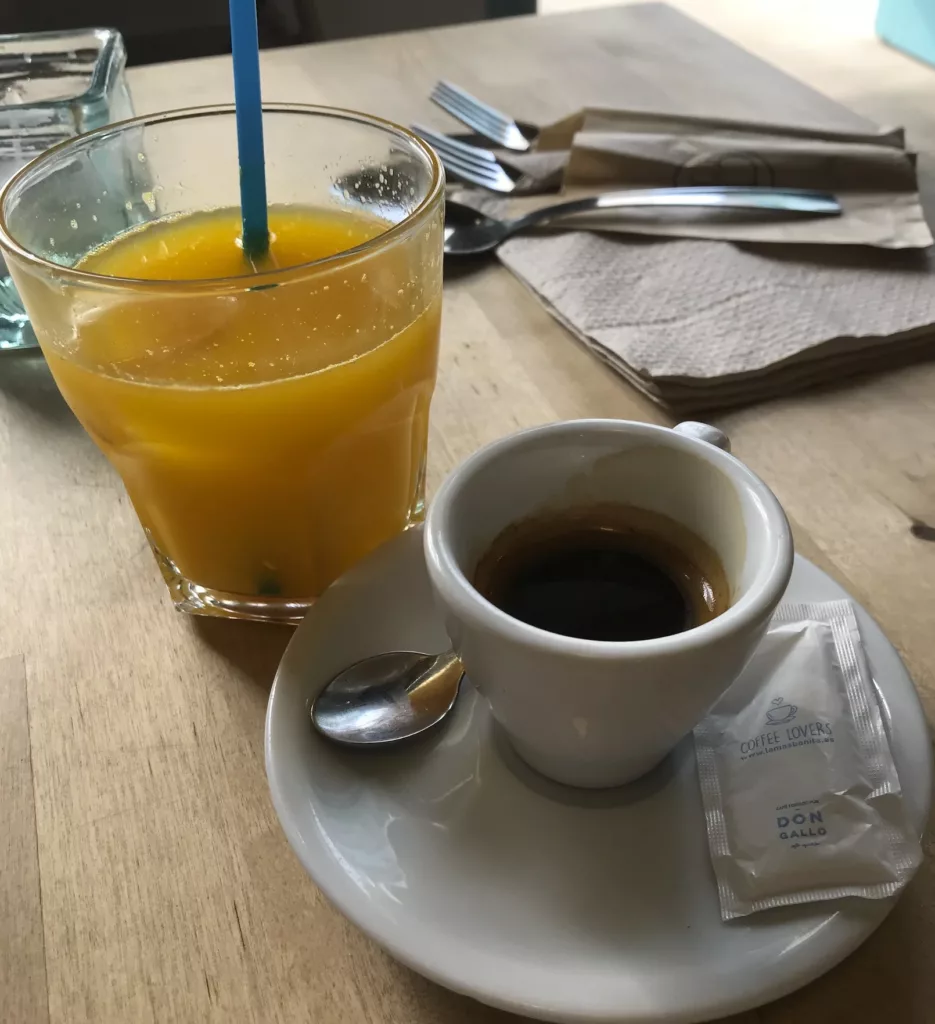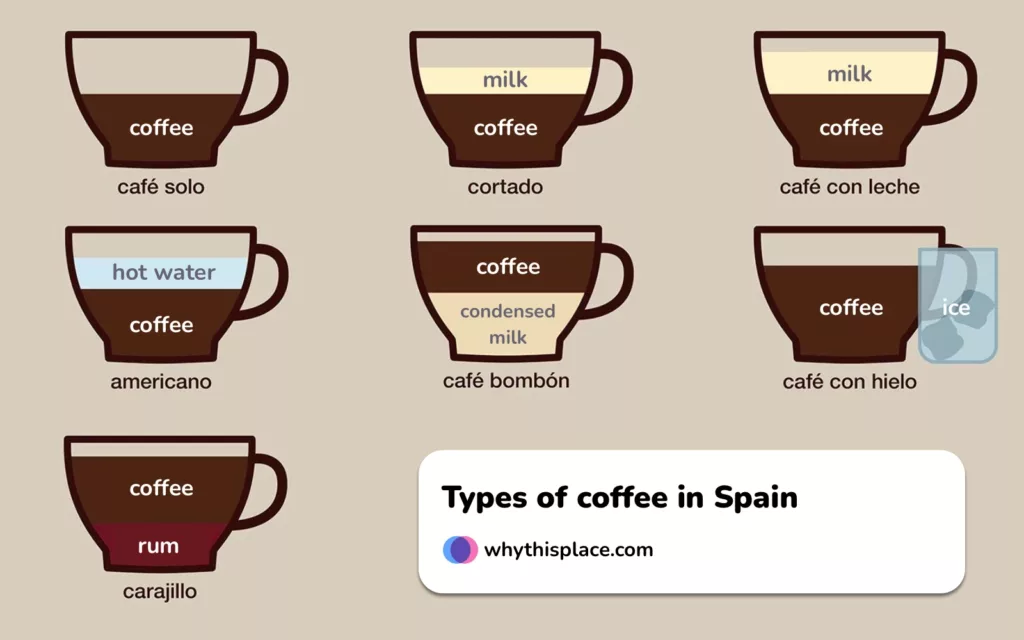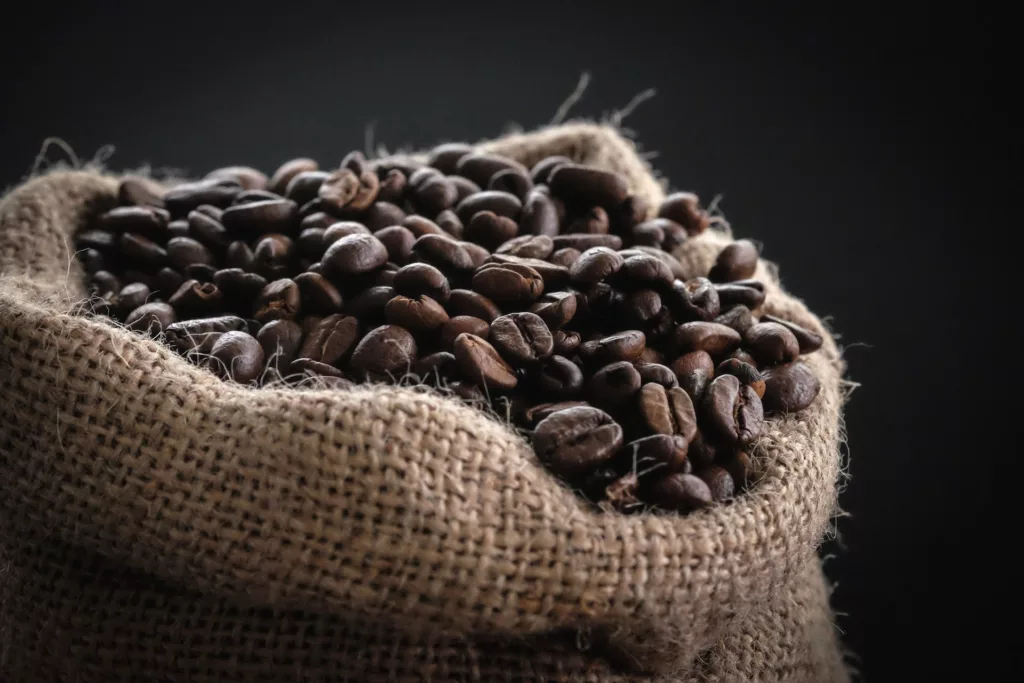Coffee in Spain: How to Order and What to Try
Written by Nadia Podrabinek
Hello, my name is Nadia. I usually write about traveling (there are so many places to fit all the lifestyles), relocation, and living in a foreign country (adapting to a different culture). My travels stretch beyond Spain, with journeys to the US, Italy, Norway, Portugal, and France. Relocating to Spain in 2018, I lived in cities from Barcelona to Madrid, currently calling Valencia home. Follow me on Twitter, Facebook, Instagram, or LinkedIn! ... show more

When ordering coffee in Spain, there are a few key things to keep in mind.
Coffee types in Spain
First and foremost, you will need to know the different types of Spanish coffees available – café con leche (coffee with milk), café cortado (espresso diluted with a small amount of warm milk, somewhere between espresso and latte, though not quite either one), café solo (espresso), or café con hielo (espresso with a couple of large cubes of ice).
It is also important to note that when ordering any coffee in Spain, they typically serve it for drinking at the counter or the table. It is rare when they do it for taking away, like most places around the world.
What people say on Reddit
Is saying simply “un café, por favor” uncommon in Spain (if you want a café solo)? That’s what I’ve been saying thusfar (also new in Spain) and often they respond with “solo?”, so I guess it would always have to be specified?
sprigsoflavender
Not a native speaker, but I speak with coworkers sometimes. You use “Hacer” (make) for “brew.” So “I have to brew coffee” would be “Tengo que hacer el café.”
For sweetener you can just say “sugar” which is “azúcar.” So I would say “¿Te gustaría el café con azúcar?” which means “Would you like your coffee with sugar?” Cream is crema. Milk is leche.
For roast, I’m guessing your talking about blonde/medium/dark roast. I think dark roast is “tueste oscurco.” The other two I’m not sure on but medium roast is probably “tueste medio” and I’m even less sure about light roast, so I won’t guess on that one.
Finally, I have no idea how you would say pour over. Sorry.
darikana
Not a native speaker, but got some spanish classes… I guess for “Roast” they use the word “Tostado”, so when u say Blonde roast u can translate it to “Tostado Ligero”, Medio for medium and “oscuro” for Dark.
Pour over sounds the same i guess… Hmmm “sweetener is like amm endulzante (?) and brew is like ” pasar” They say ” Quiero un cafe pasado” ” I want a brewed coffee.
Hope this can help you 😀
IceOnAVenti
It sounds like maybe you’re getting a café cortado, which is espresso with a little bit of milk. the size of café con leche can really just depend on the place you’re getting it though– at bars I went to when I lived in spain it was usually the size of a small capp, but constructed differently obviously.
captainpurple
How to order a coffee
Once you’ve decided which type of Spanish coffee you’d like, approach one of the baristas behind the bar (or wait at the table) and order your drink using its traditional name:
- Un café con leche, por favor
[oon kah-feh kohn leh-cheh, por fah-vohr] - Un cortado, por favor
[oon kohr-tadoh, por fah-vohr] - Un café solo, por favor
[oon kah-feh soh-loh, por fah-vohr] - Un café con hielo, por favor
[oon kah-feh kohn ee-eh-loh, por fah-vohr]
If you want it to go, add “para llevar” [pah-rah yeh-bahr].
They also might ask about the sugar, with the question, “Sacarina? Azucar? Blanco o Moreno?” (Do you want sweetener or sugar? White or brown?)
You can add sugar if desired by saying, “Con azucar”. And sometimes they will not ask you about the sugar as many Spanish people prefer black coffee.

Helpful tips on Spanish coffee culture
- Don’t hesitate to approach the bar and ask for the coffee! Many Spanish cafés struggle with high taxes, so fewer people work, and the service is slower than you may expect.
- They sometimes can mess up with serving the correct type of coffee: I had several occasions when they brought coffee with mil instead of americano. So, feel free to ask for the proper coffee.
- They don’t have a wide variety of coffee (assuming you walk into the traditional bar or restaurant), as they are very conservative in Spain.
- Tipping for coffee is not customary.
- Try carajillo (coffee made with rum) or café bombon (sweetened condensed milk added to strong black espresso). The first is usually very strong, and the second is very sweet.
- If you are having coffee, breakfast, or whatever at the table – you can sit there as long as you want, even if you have finished with the food or drinks. In Spain, they will not ask you to free the table and will not hint that it’s time for you to order something else.
- Moreover, it is you who will have to ask for the check (“La cuenta, por favor!”). As long as you don’t ask for it, you can sit at the table.
- The Spanish people have a coffee break in the mid-morning as it is an integral part of Spanish culture. The morning coffee ritual serves as an important moment to relax and take a breather before they go back to their daily work. Even workers of public institutions have this custom of drinking coffee mid-morning!
The taste

It is a bit problematic – I found coffee in Spain is mediocre at best. I am accustomed to good coffee and rarely have a delightful taste of it in Spain.
In Spanish cafés, coffee tends to be less-than-optimal because it often includes a combination of roasted and sugared beans, which results in an unpleasant burnt caramel flavor.
I even have a friend who gave away drinking coffee in Spanish coffee shops, bought the necessary equipment to make it at home, and attended barista courses. Now, he is a “coffee rock star” in his district.
At the moment of writing the article, I live in Valencia, Spain. I can barely count decent coffee shops on the fingers of one hand:
However, many people believe that Spanish coffee is quite good, thick and flavorful without tasting that much burnt or bitter compared to the United States.
So, if you know some good coffee spots in Spain, please let me know in the comments below. I also appreciate suggestions for coffee shops in Madrid, Barcelona, or any other city 😉
